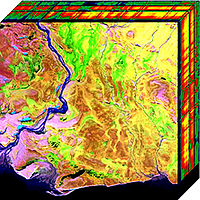
Photo from wikipedia
Stay-at-home orders and social distancing regulations imposed during the COVID-19 pandemic have limited many scientists’ access to instrumentation, thereby requiring the development of creative methods to conduct material analyses, including… Click to show full abstract
Stay-at-home orders and social distancing regulations imposed during the COVID-19 pandemic have limited many scientists’ access to instrumentation, thereby requiring the development of creative methods to conduct material analyses, including the use of makeshift home laboratories. Fortunately for those engaged in microscopy-related science, small footprint digital light microscopes are commercially available with spatial resolutions ranging from ≈ 20 μm, obtained from student-grade plastic optics, to ≈ 2 μm for higher quality/magnification glass lens systems. We have combined images collected using home-based microscopy together with those from more advanced systems, e.g. scanning electron microscopy (SEM) and X-ray computed tomography (XCT), to obtain insight into the microstructural properties of face covering materials. In this study the construction and textures of woven and non-woven fabrics [1], as well as face covering insert filter materials [2] were examined. Additionally, the microstructural impact of high relative humidity on a hydrophilic textile was documented along with the measurement of parameters required to model filtration behavior for selected materials [3].
Journal Title: Microscopy and Microanalysis
Year Published: 2021
Link to full text (if available)
Share on Social Media: Sign Up to like & get
recommendations!